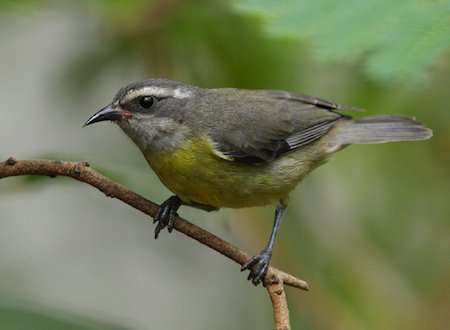Coerebidae – Bananaquit

The Bananaquit Coereba flaveola is a species of passerine bird of uncertain relation. It was tentatively placed in the tanager family, but classified as incertae sedis by other authorities such as the American Ornithologists’ Union. Its classification is debated, and it is now more often placed in its own family: Coerebidae. It has recently been suggested the bananaquit should be split into three species, but this has yet to receive widespread recognition. This small, active nectarivore is found in warmer parts of the Americas, and is generally common.
There are no less than 41 currently recognised subspecies. It is still unclear if any of the island subspecies should be elevated to species, but phylogenetic studies have revealed three clades: the nominate group from Jamaica, Hispaniola and the Cayman Islands, the bahamensis group from the Bahamas and Quintana Roo, and the bartholemica group from South and Central America, Mexico (except Quintana Roo), the Lesser Antilles and Puerto Rico. Several taxa were not sampled, but most of these are easily placed in the above groups based on zoogeography alone. Exceptions are oblita (San Andrés Island) and tricolor (Providencia Island), and their placement is therefore uncertain. In February 2010, the International Ornithological Congress listed bahamensis and bartholemica as proposed splits from C. flaveola.
-
Number of bird species: 1
-
Bananaquit Coereba flaveola
Species AccountSound archive and distribution map -
Bananaquit Coereba flaveola
Cornell Species AccountThe Bananaquit inhabits a variety of habitats from scrubland to tropical lowland forest edge, from the Antilles and Mexico south to Paraguay and northern Argentina. Bananaquits are distinctive birds with down-curved bills, black upperparts, bright yellow underparts, and a conspicuous white eyebrow.
